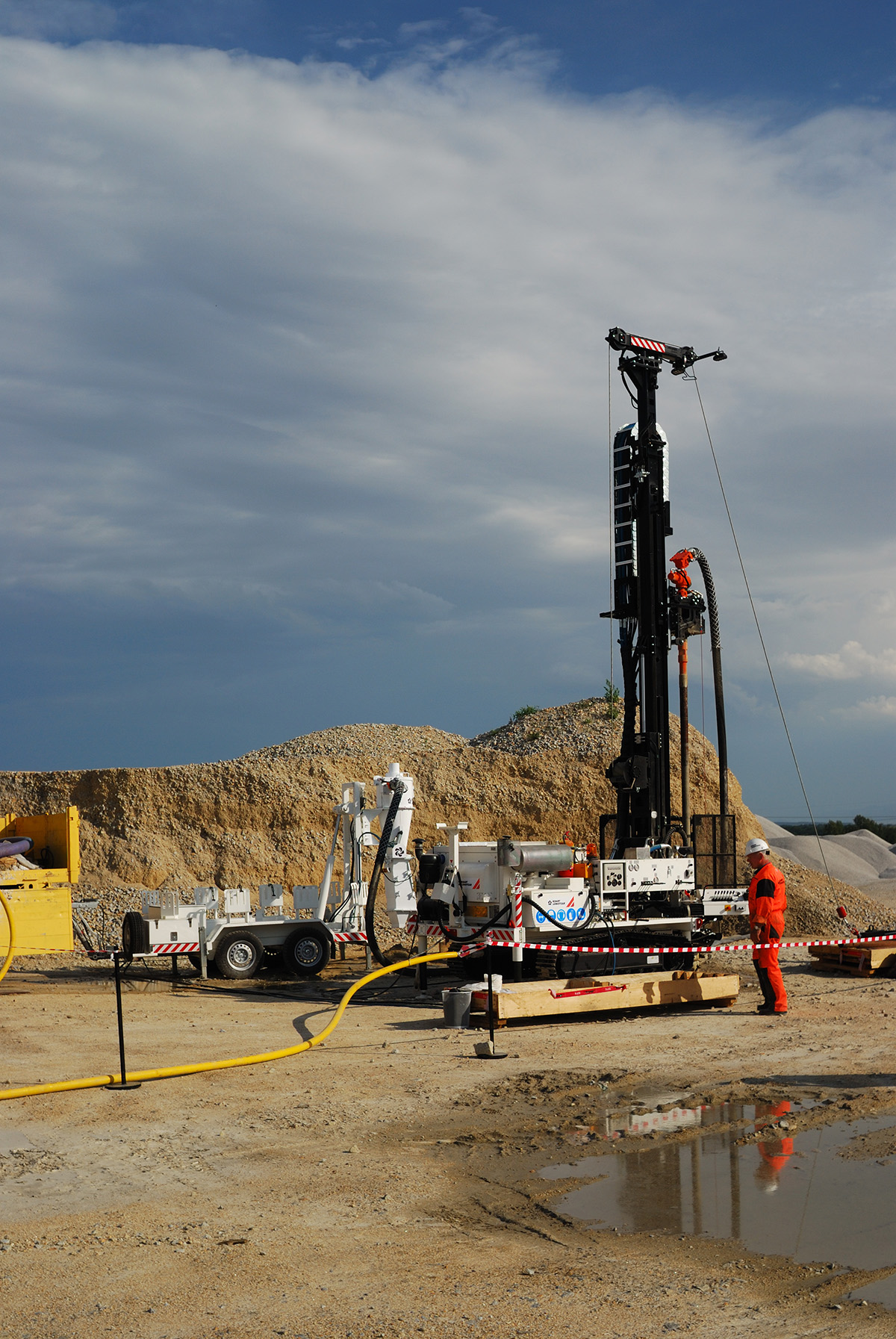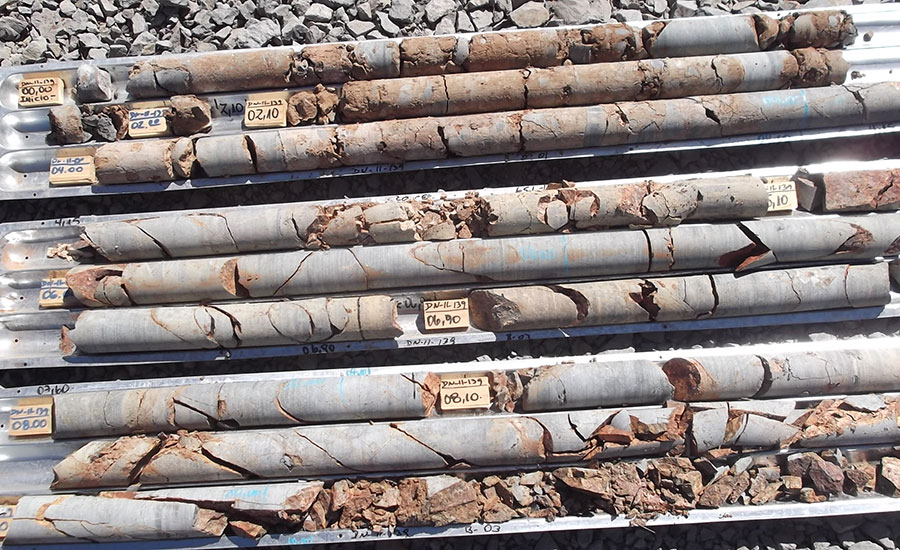How a Geotechnical Specialist Can Make Certain the Success of Your Building Structures
How a Geotechnical Specialist Can Make Certain the Success of Your Building Structures
Blog Article
Exploring the Fundamental Concepts and Applications of Geotechnical Design for Sustainable Framework Development
The crossway of geotechnical engineering and lasting infrastructure advancement provides an engaging chance to improve both design efficiency and environmental responsibility. By recognizing essential concepts such as dirt mechanics, website characterization, and foundation style methods, designers can produce solutions that are not only efficient yet additionally decrease ecological footprints. Furthermore, the integration of lasting methods right into geotechnical tasks questions about source utilization and long-term strength. As we analyze these principles, the implications for future framework tasks require mindful factor to consider, specifically in an era increasingly specified by ecological difficulties.
Key Concepts of Geotechnical Engineering
Recognizing the vital principles of geotechnical engineering is essential for designing sustainable framework (geotechnical companies in south africa). This technique concentrates on the interaction in between soil, rock, and frameworks, playing an essential function in the security and performance of engineering jobs. The leading principle is the analysis of subsurface conditions via site examinations, which provide beneficial details about dirt residential properties, stratification, and groundwater levels
An additional crucial concept is the application of efficient tension theory, which helps designers recognize how soil actions changes under varying loads. This understanding is important for examining the bearing capacity of structures and guaranteeing that structures can hold up against both vibrant and fixed forces.
Additionally, the concepts of soil-structure communication and slope security are integral to geotechnical layout, as they educate decisions on the placement and style of maintaining embankments, inclines, and walls.
Last but not least, geotechnical designers need to think about sustainability by promoting the usage of in your area sourced products, decreasing ecological influence, and enhancing layouts for long life. By adhering to these concepts, geotechnical design adds considerably to the production of lasting and durable facilities that fulfills the demands of culture while shielding the environment.
Soil Mechanics and Its Value
Dirt mechanics serves as the foundation of geotechnical engineering, offering the scientific concepts needed to examine the habits of dirt under various problems. Understanding soil technicians is essential for anticipating just how dirt will react to lots, changes in wetness content, and other ecological elements. This knowledge enables designers to develop frameworks that can stand up to the stress exerted by the soil and ensure security and safety and security.
The study of dirt mechanics includes numerous facets, consisting of soil category, shear compressibility, stamina, and leaks in the structure. These factors influence the layout of foundations, maintaining walls, and various other geotechnical structures, making it essential to evaluate soil residential or commercial properties accurately. As an example, the shear toughness of dirt straight impacts the stability of slopes and excavations, while compressibility influences settlement predictions for structures.
Moreover, dirt auto mechanics plays a vital role in lasting infrastructure growth. By recognizing the soil's actions, engineers can reduce environmental effects, optimize material usage, and enhance the durability of frameworks. This integration of soil auto mechanics into geotechnical engineering techniques not just guarantees safety and security but also adds to the total sustainability of construction jobs, promoting efficient resource monitoring and environmental stewardship.
Site Characterization Strategies
Effective site characterization techniques are critical for gathering vital information regarding subsurface problems prior to building and construction - geotechnical engineer description. These methods provide important insights into soil properties, rock formations, groundwater levels, and possible geohazards, consequently informing project design and mitigating threats
One widely used method is piercing, which permits direct tasting of dirt and rock layers. This can be enhanced by in-situ screening, such as Typical Penetration Examinations (SPT) and Cone Infiltration Tests (CPT), to evaluate soil toughness and stratification. Geophysical techniques, consisting of seismic refraction and electric resistivity studies, enable non-invasive assessment of subsurface products and frameworks, supplying a wider point of view on geological conditions.
Furthermore, lab testing plays a crucial role in analyzing dirt examples gotten from drilling. Tests such as grain size evaluation, Atterberg limitations, and triaxial shear tests produce vital information on dirt habits under various loading problems.
Including these website characterization techniques not look these up just improves the understanding of website problems yet additionally supports lasting facilities growth by making sure that jobs are developed with proper security margins and efficiency requirements. Therefore, a thorough site characterization is crucial for notified decision-making in geotechnical design.
Foundation Style Approaches
Structure design methods are important for making sure the security and long life of frameworks in numerous geotechnical contexts. These strategies start with a complete website examination, which includes soil testing and evaluation to figure out the physical homes of the subsoil. Comprehending soil behavior under lots is important for choosing the proper foundation kind, whether superficial or deep.
Shallow foundations, such as spread footings or floor covering foundations, are typically used when ideal soil layers are offered near the surface area. On the other hand, deep foundations, such as piles or drilled shafts, are used in situations where surface soils are inadequate to sustain structural lots.

Lasting Practices in Geotechnical Design
The combination of sustainable methods in geotechnical engineering plays a critical role in enhancing the environmental and economic viability of infrastructure tasks. By focusing on resource efficiency and reducing environmental impacts, engineers can add to the advancement of durable framework systems.
One trick lasting technique entails using different materials, such as industrial byproducts and recycled accumulations, which can decrease the need for virgin resources and reduced carbon emissions. In addition, soil stablizing techniques, consisting of the application of bioengineering methods, boost soil properties while advertising environmental equilibrium.
Furthermore, the implementation of sophisticated geotechnical modeling and monitoring modern technologies permits much better forecast and management of ground conditions, bring about optimized style remedies and resource use. These modern technologies also facilitate the evaluation of long-lasting efficiency, ensuring that structures remain functional and secure over their life-span.

Final Thought
In final thought, the principles and applications of geotechnical engineering play an important role in sustainable facilities advancement. Emphasizing dirt mechanics, site characterization, and cutting-edge foundation design approaches enhances the strength and effectiveness of frameworks.
By understanding vital principles such as dirt auto mechanics, site characterization, and structure design approaches, designers can produce remedies that are not only effective yet also decrease eco-friendly footprints.Soil technicians offers as the foundation of geotechnical design, giving the clinical principles required to examine the habits of soil under various conditions. Comprehending soil technicians is vital for anticipating exactly how soil will respond to tons, modifications in moisture web content, and various other environmental variables.The study of dirt auto mechanics encompasses her response various elements, consisting of soil category, shear permeability, compressibility, and stamina. These aspects affect the design of foundations, maintaining walls, and various other geotechnical structures, making it important to analyze dirt homes accurately.
Report this page